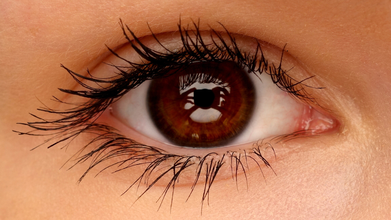- Health Conditions A-Z
- Health & Wellness
- Nutrition
- Fitness
- Health News
- Ayurveda
- Videos
- Medicine A-Z
- Parenting
- Web Stories
Brain Rot: How Endlessly Scrolling Reels May Be Rewiring Your Brain?

Credit: Canva
You're mid-scroll on Instagram. Reels flicker past—dogs talking, influencers dancing, a cake shaped like a car. Fifteen seconds later, you've forgotten what you just watched. The screen is still glowing, but your mind feels foggy, restless, and strangely drained. This growing sense of mental fatigue and loss of focus now has a name: brain rot.
Once a piece of internet slang, the term brain rot has entered mainstream mental health discussions. It captures the cognitive exhaustion and emotional numbness that stem from mindless consumption of endless online content.
Dr Samir Parikh, Director of Mental Health & Behavioural Sciences at Fortis Hospital, Vasant Kunj, explained in a telephonic conversation with Business Standard, “Brain rot is not a recognised formal clinical diagnosis. It’s a metaphor gaining traction to describe the mental fatigue and cognitive decline linked to excessive digital consumption. It is a lack of using one’s own logic and common sense while consuming content online.”
From Meme to Mental Health Warning
According to media reports, the phrase has been around since at least 2007. Initially used online to joke about watching reality shows or playing video games for too long, the term gained momentum as short-form platforms like Instagram Reels, YouTube Shorts, and (formerly in India) TikTok exploded—especially during and after the pandemic. “Brain rot” soon became shorthand for the zombie-like state one experiences after hours of compulsive scrolling.
Is Brain Rot Real?
Though not a clinical condition, its impact is real. “It is common knowledge that if you are consuming anything that is not going to serve you, it will affect your health,” Dr Parikh said. Experts link excessive screen time—especially content designed for speed and emotional extremes—to poor focus, decreased attention span, and impaired memory. “While your brain is not literally rotting, its ability to function at peak cognitive performance might be under siege,” he warned.
Why It Happens: Dopamine and Distraction
The brain’s reward system plays a role. Each like, swipe, or view gives a tiny dopamine hit, creating a loop of craving and instant gratification. Over time, content that requires low cognitive effort trains the brain to expect stimulation without any work. Constant tab switching and app-hopping fragment attention, while overexposure to emotional highs and lows dulls responsiveness.
The result? You’re mentally tired, easily distracted, and emotionally checked out. Struggles include reading long articles, needing background noise constantly, zoning out in conversations, and forgetting content minutes after viewing it.
Can You Reverse It?
Yes, says Dr Parikh. “Since brain rot is not a clinical diagnosis, there is no prescribed treatment, but behavioural and cognitive solutions like limiting screen time, trying attention exercises, and mindful content consumption can reverse its effects.”
Some strategies include:
Digital detoxes—start with 30 minutes offline, build up to entire weekends.
Re-training attention—read uninterrupted for 20 minutes, meditate, or journal without devices.
Mindful content—follow creators who offer depth; switch to long-form content.
Nature therapy—spend time outdoors to recharge and focus.
Good sleep—avoid screens 1–2 hours before bed.
Your brain wasn’t designed for endless scrolling. It thrives on stillness, deep focus, and real-world interactions. In a world that rewards distraction, the smartest thing you can do is pause. Step away. Let your mind breathe.
'Your Calves Are Your Second Heart' Doctor Reveals What Happens When You Lack Daily Movement

(Credit-Canva)
Many people have a one-dimensional view of their health, ‘if I eat healthy I don’t have to exercise as much’ or ‘since I exercise a lot, I can eat whatever I want’ but it doesn’t work like that. Everything we do and all the organs in our body are interdependent. So which body part does our heart depend on?
Most people only think about their main heart when they consider blood circulation, but there's a lesser-known helper: your calf muscles. These muscles, located in the back of your lower legs, act like a "second heart."
In a recent post, dietician Ms Manpreet Kalra, explained how important calf muscles are to our heart health.
She explained that when you walk, run, or simply move your ankles, your calf muscles squeeze. This squeezing action pushes the blood that has collected in your lower legs and feet back up towards your main heart and the rest of your body. It's a vital part of healthy circulation, preventing blood from just pooling in your legs due to gravity.
The Danger of Sitting Still
If you spend long hours sitting down—whether at a desk, on a plane, or watching TV—you essentially "shut down" your second heart. When your calf muscles aren't moving, they stop doing their job of pumping blood back up. This lack of movement leads to several problems:
Poor Circulation
When your calf muscles are inactive, they stop pumping, causing blood to start pooling in your lower legs and feet. Gravity takes over, meaning the blood has a hard time making the trip back up to your heart, slowing everything down.
Swelling and Fatigue
As blood and fluids linger in your legs, you might notice they feel heavy, tired, or appear visibly swollen. This feeling of dragging your feet is a direct result of your calves not properly assisting your body’s circulatory system.
Toxin Buildup
Normally, your blood removes waste, but when it slows down, toxins build up in your inactive muscles. These waste products are not cleaned out efficiently, which can contribute to muscle discomfort and general poor health over time.
Increased Risk of Blood Clots
The biggest danger is an increased risk of Deep Vein Thrombosis (DVT), which is when a blood clot forms in a deep vein, usually in the legs. These clots can be very dangerous if they break loose and travel to the lungs.
Simple Ways to Activate Your "Second Heart"
The good news is that keeping your calf muscles active is easy and requires only small changes to your daily routine. Movement is the key to keeping your circulation flowing and your heart safe. Here are simple actions you can take:
Move Regularly
Try to walk or stretch for a few minutes every 45 to 60 minutes if you have a desk job. Even standing up and sitting down a few times helps.
Do Calf Raises
While standing, rise up onto your toes and then lower your heels back down. Doing this simple exercise daily—even while brushing your teeth—is great for strengthening and activating your calves.
Change Positions
Avoid sitting with your legs crossed for long periods, as this can squeeze veins and restrict blood flow.
By taking care of your calves, you're not just taking care of your legs—you're helping your whole circulatory system and protecting your main heart!
This Sign Of Alzheimer's Disease That Can Show Up 25 Years Before Diagnosis: Study Finds

(Credit-Canva)
Dementia is more common than you think. According to the Alzheimer’s Disease International, there were over 55 million people in the world living with dementia in 2020. According to the organization, this number is said to double every year for 20 years, and this number is said to reach 78 million in 2030.
There are many different types of dementia, one of which is Alzheimer’s disease. It is the most common form of dementia. While there is no cure for dementia, catching it early can help people manage the condition. But with the vague symptoms of Alzheimer’s, early diagnosis is difficult.
Researchers have found a possible new sign of Alzheimer's disease that could show up incredibly early, which is poor spatial navigation. Think of spatial navigation as your brain's ability to figure out where you are and how to get where you're going, your internal GPS.
This difficulty could appear up to 25 years before the more commonly known symptoms, like losing your memory. Finding a warning sign this early is a huge step because getting a diagnosis sooner is vital for beginning treatment and for scientists working to find ways to prevent the disease.
What Does Knowing Your Surrounding Mean?
A team of scientists from the University College London (UCL) conducted a study to look for these early signs. They worked with around 100 people between the ages of 43 and 66. These people were chosen because they had a higher risk of getting Alzheimer's later in life. This risk was due to things like having a family member with the disease, carrying a specific gene (called the APOE-ε4 allele) linked to higher risk, or having risk factors in their lifestyle.
An important point to note was that every single person in the study showed no signs of Alzheimer's, they were perfectly healthy and were about 25 years younger than the age doctors would typically expect dementia to start for them.
To test their navigation skills, the participants put on virtual reality (VR) headsets and were asked to find their way around a computer-generated environment. The results showed that the people who were at higher risk for Alzheimer's had a much harder time completing the VR navigation task. They essentially got lost or struggled more to find their way.
Early Sign Of Alzheimer’s Disease
Importantly, these same people did just fine on other types of tests, including those that check memory. This suggests that having trouble with spatial navigation could be one of the very first things to go wrong in the brain, years or even decades before you start forgetting things.
The experts said that this change might be the earliest possible signal that someone is starting to move from being healthy to showing the first signs of the disease. The researchers are now planning to turn this VR test into a tool that doctors could use to help diagnose the disease earlier.
explained that these findings are exciting for two main reasons. First, they allow doctors to spot the start of Alzheimer's much sooner, which is critical for making treatments work better. Second, the VR test is based on how special cells in the brain in an area called the temporal lobe handle space and location.
This means the test helps connect the dots between tiny changes in the brain's cells and the actual symptoms people experience. This connection is a huge barrier in current Alzheimer's research.
The study also noticed that men showed a bigger drop in their spatial navigation skills than women did. This suggests that more research is needed to understand why men and women might be affected differently by Alzheimer's.
The Alzheimer's Society agreed, emphasizing that early and accurate diagnosis is essential, and this study clearly shows that problems with navigation could be one of the very first signs to watch out for.
What is the 20-20-20 Rule For Healthy Eyes?

Credits: Canva
So far, we know the 6-6-6 rule for walking, but there is something new for eye health too. It is called the 20-20-20 rule. In our day to day lives, our screen time has increased, in fact, screens have become an integral part of our life, which means we must take extra care of our eye health and this 20-20-20 rule will help you.
What Is 20-20-20 Rule?
This rule says that for every 20 minute that you spend on looking at the screen, you must take a 20 second break to look at something 20 feet away.
While you won't know how far is 20 feet from your desk, the key is not to actually stand 20 feet apart, but to take a break from your screen and be far from it, especially if you have a smaller work space and don't have the time to roam around.
You can set an alarm every 20 minutes to remind yourself for a well deserving break that you deserve.
Is the 20-20-20 Rule Supported By Research?
The American Academy of Ophthalmology says that looking at digital devices won't necessarily damage your eyesight, but it can cause strain and unpleasant symptoms. Humans usually blink around 15 times each minute, and when we stare at our screens, the frequency decreases half or a third. This is why our eyes feel dry, irritated, and we feel that our eyes are getting tired.
What Happens When You Strain Your Eye?
If you have an eyestrain, you may experience pain, tiredness, itching, burning of your eyes. Furthermore, you may experience these following symptoms:
- dry eyes
- watery eyes
- blurred vision
- double vision
- headaches
- soreness in the neck, shoulders, or back
- sensitivity to light
- difficulty concentrating
- difficulty keeping eyes open
What Can You Do To Avoid Straining Your Eyes?
Maintain proper distance: Sit about 25 inches (roughly an arm’s length) away from your screen and position it slightly below eye level.
Cut the glare: Use a matte screen filter or adjust your lighting to reduce reflections.
Take regular breaks: Follow the 20-20-20 rule — every 20 minutes, look at something 20 feet away for at least 20 seconds.
Keep your eyes moist: Use over-the-counter lubricating eye drops and consider a humidifier if the air feels dry.
Blink more often: Frequent blinking helps keep your eyes naturally lubricated.
Adjust brightness: Match your screen’s brightness to the surrounding light to minimize strain.
Clean your screens: Dust and fingerprints can make it harder to see and increase eye fatigue — wipe them regularly.
Give contacts a rest: Alternate between contact lenses and glasses to reduce dryness and irritation.
Follow lens hygiene: Always wash your hands before handling contacts and avoid sleeping in them to prevent infections.
© 2024 Bennett, Coleman & Company Limited

